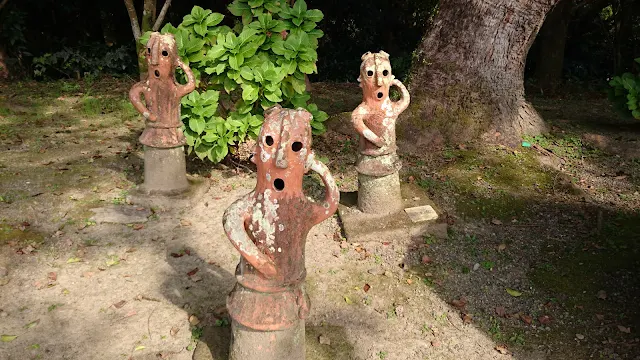
In ancient Japan, during the Kofun period (3rd to 6th centuries AD), a fascinating tradition existed: the creation and use of haniwa (埴輪).
These terracotta clay figures served a significant role in rituals and were buried alongside the deceased as funerary objects.
Let's delve into the details of haniwa, exploring their forms, significance, and distribution across various burial mounds in Japan.
{tocify} $title={Table of Contents}
What Are Haniwa?
The term "haniwa" broadly refers to a category of unglazed earthenware objects found atop burial mounds (kofun) and arranged around their perimeters.
These mounds were tombs for Japan's elite during the Kofun period.
The haniwa figures were carefully crafted and placed as part of burial rituals.
Types of Haniwa
Significance and Ritual Use
Distribution
Haniwa have been discovered at burial sites throughout Japan. Some notable examples include:
- Daisen Kofun: Located in Osaka Prefecture, this massive keyhole-shaped tomb features an array of haniwa figures.
- Takamatsuzuka Kofun: In Nara Prefecture, this tomb contains exquisite painted haniwa depicting scenes from daily life.
- Nintoku-tenno-ryo Kofun: The largest tomb in Japan, located in Osaka Prefecture, boasts thousands of haniwa.
Legacy
Haniwa provide a tangible link to ancient Japanese beliefs, aesthetics, and rituals.
Their artistic forms continue to captivate researchers and enthusiasts alike.
As we explore these remnants from the past, we gain deeper insights into the rich cultural tapestry that shaped early Japanese civilization.
Remember that these humble clay figures once held profound significance for those who laid them to rest—a testament to humanity's enduring quest for meaning beyond mortality.

Post a Comment